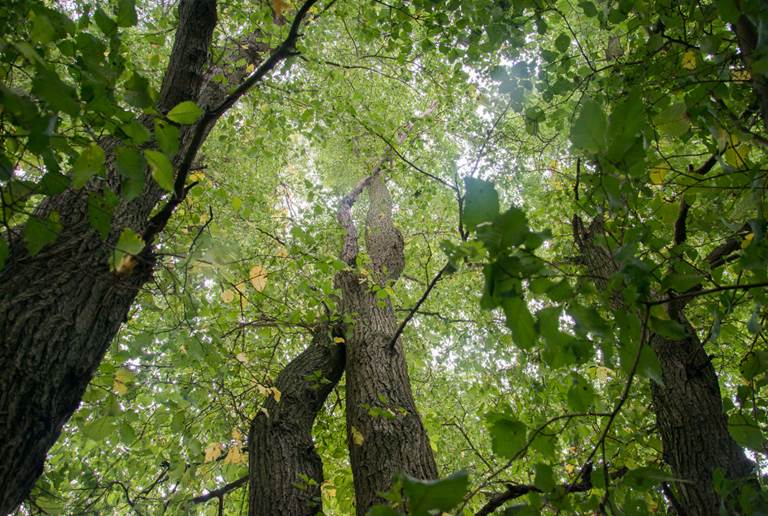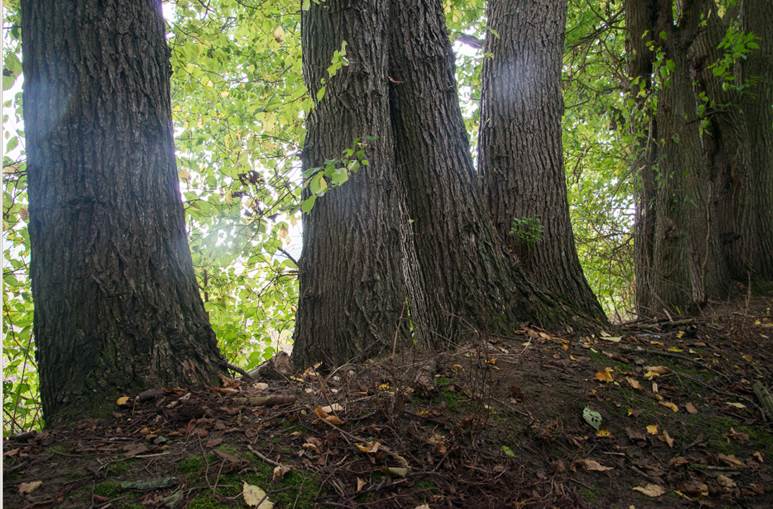31st Oct, 2017
NNUH Shelterbelt Report - September 2017

In September 2017, Environmental Arts compiled a ‘Shelterbelt Report’ following on from the earlier ‘Conservation Approach’ report of December 2015 which concluded then that the NNUHT Colney Lane site should be classified as ‘Urban’ due to the nature of the hospital build and the urban heat island effect. This is ‘urban heat island effect’ is characterised by the intensity of heat from the buildings and car parks, exacerbated by vehicle fuel emissions, extensive use of glass and metal, poor quality top soil and soil compaction causing increased water run-off.
This new report specifically looks at the NNUHT site’s Shelterbelt: its purpose, condition and the need for urgent thinning and plans for long term conservation.
Essentially, a shelterbelt is defined as a barrier or area of trees and shrubs planted for environmental purposes – in the case of the NNUHT it is designated ‘The Woodland Walk’, which includes original field hedgerow, Hazel, Elm, Field Maple and White Poplar which blend in well with the more recent planting of 2002 when the main hospital was built.
This report into the NNUH’s Shelterbelt was initiated due to ongoing conservation concerns, primed with the now growing knowledge of the environmental and health benefits shelterbelts can bring and how they can help against some of the more harmful ‘urban’ effects.
We can see this through noticeable improvements in air quality, noise reduction (as trees act like a natural barrier), heat amelioration (which means it has a cooling effect on urban temperatures), helping to combat water run-off issues, benefits to a healthy soil, an increased wildlife habitat, a sheltering effect against the elements, and increased therapeutic benefits to physical and mental well-being for people that live and work in the proximity of a shelterbelt.

Many of the ‘leaf canopies’ – which a tree depends upon for survival – are very small in our shelterbelt and thinning appears to be long overdue. Thinning will release the dominant trees and will improve growth and the ability for each tree species to deal with seasonal extremes.
We have been lucky to appreciate too that our shelterbelt is home to a row of rare Field Elms. Dr Max Coleman from the Royal Botanic Gardens Edinburgh and Dr Alex Gunner have provided useful advice and assessment, testing the trees for resilience. Although these Elms do show resistance, the presence of Dutch Elm Disease has been noted.
With the presence then of rare trees, there is an added to focus to the preservation and growth of the NNUH Shelterbelt.
Partners in this ongoing project are NHS Forest, NHS Trust Volunteers and Voluntary Services, NNUH Fundraising Manager, Octagon, Serco, Easton and Otley College, South Norfolk Council, The Woodland Trust and those who take part in corporate training days.
The initial Shelterbelt Report of September 2017 was informed by NHS Forest, Carl Ansell and Martyn Davey (Easton and Otley College), Robin Taylor (South Norfolk Council), The Woodland Trust, Dr Alex Gunner, Hugh Coggles (Aboriculture).







